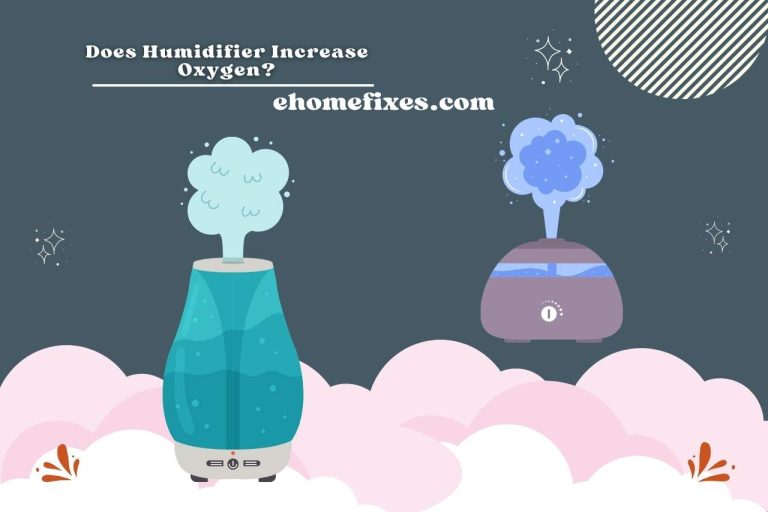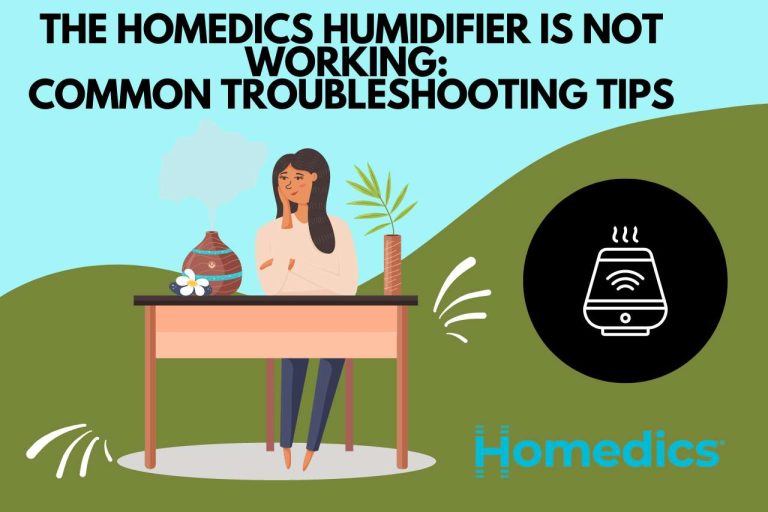How To Clean Dehumidifier Coils? A Health Perspective
How to clean dehumidifier coils? You’ll learn the secret to preserving ideal humidity levels and guaranteeing a healthy environment within these virtual pages. Join us as we explore the crucial stages and professional advice for cleaning dehumidifier coils. Our insights provide you the power to take charge of the comfort and wellbeing of your interior area, from eradicating mold and mildew to increasing energy efficiency. Together, let’s set out on a path to cleaner, fresher air.
What Are Humidifier Coils?
Typically, when we talk about humidifier coils, we’re talking about a portion of some kinds of humidification systems, especially in commercial and industrial settings. These coils are a component of steam humidifiers or steam generators, machines that add controlled amounts of moisture to the air to maintain ideal humidity levels inside a structure or other particular environment.
Metal tubes or pipes make up the humidifier coils, which are used to transport steam produced by boiling water. Water is heated to produce steam in a steam humidification system, which is then delivered through humidifier coils. Before being discharged into the environment, air flows over these coils and picks up moisture from the steam.
In settings like industrial manufacturing plants, commercial greenhouses, data centers, and other places where maintaining precise humidity levels is necessary for processes, equipment performance, or occupant comfort, large-scale humidification systems frequently use humidifier coils.
What Do Dehumidifier Coils Do?
- To lower humidity levels in a space, dehumidifier coils are essential for eliminating extra moisture from the air. By bringing in humid air, allowing it to pass over chilly coils, and condensing the moisture in the air into liquid water, a dehumidifier helps regulate humidity. The dehumidifier machine draws in humid air.
- The cool coils, which are normally constructed of metal and contain a refrigerant, are passed over the moist air coming in. The air’s temperature decreases as a result of coming into contact with the chilly coils. The ability of the air to hold moisture declines as it cools. As a result, liquid water condenses into droplets on the surface of the cold coils. The reservoir or drip pan where this condensed water is collected.
- As it exits the cooling coils, the air that has had its moisture removed from it gets drier and warmer. The room’s total humidity is effectively decreased by releasing this dry air back into it.
- The dry air is then circulated through a different set of warm coils in certain dehumidifiers before being returned to the space. Prior to being returned into the environment, the air is reheated to a more comfortable temperature.
- Coils for dehumidifiers are necessary to maintain a cozy and healthy indoor climate. High humidity levels can exacerbate some medical disorders as well as cause problems like mold development and musty odors. By eliminating extra moisture from the air and reducing the harmful effects of high humidity, dehumidifiers aid in resolving these issues.
Why Is Cleaning Dehumidifier Coils Important?
- Over time, dust, dirt, and debris can gather on the coils, forming a coating that serves as insulation. The dehumidifier’s efficiency is decreased by this insulation because it prevents heat from moving from the air to the coils. To obtain the appropriate humidity levels, the dehumidifier must work harder and use more energy.
- Mold, bacteria, and other microbes can develop more easily in moist settings. The coils serve as a breeding ground for these dangerous compounds if they get soiled and wet. When the dehumidifier runs, it may release these irritants into the air, thereby endangering the health of those within.
- As it functions, a filthy dehumidifier may disperse dust and allergens into the air.
- The dehumidifier’s lifespan can be increased with regular maintenance, which includes coil cleaning. When coils are clean, the appliance functions more effectively, puts less strain on its parts, and lasts longer.
- A well-maintained dehumidifier performs as intended, keeping the environment’s humidity levels where they should be. Inconsistent performance and trouble reaching and maintaining the proper humidity levels can result from dirty coils.

How To Clean Dehumidifier Coils?
To avoid voiding the warranty or causing damage, make sure to disconnect the dehumidifier before you start and to follow the manufacturer’s maintenance instructions.
Collect Resources
- vacuum cleaner hose and brush
- A gentle brush or cloth
- Coil cleanser or mild detergent (review manufacturer’s guidelines)
- Water
- (If using detergent or coil cleaner, use a spray bottle)
- rags or towels
- Safety goggles and gloves are optional but highly advised.
Take the Air Filter Out
If the air filter on your dehumidifier is removable, remove it and clean it separately in accordance with the manufacturer’s recommendations.
Get to the Coils
To access the coils, you might need to remove the front grille or access panel, depending on how your dehumidifier is built. Your owner’s manual can provide instructions on how to access the coils.
Vacuum Waste
To gently remove loose dust and debris from the coils, use a vacuum cleaner with a brush attachment. With the vacuum nozzle, take care not to harm the coils.
Clean Up Debris
Remove any leftover dirt, dust, or debris from the coils using a soft brush or cloth. Be gentle so as not to bend or harm the coils.
Prepare a cleaning agent
If your coils are very filthy, you can use a coil cleaner created for this purpose or a light soap and water mixture. For the correct dilution ratio, adhere to the manufacturer’s recommendations.
Utilize a cleaning agent
Spray a cleaning agent sparingly onto the coils if using one. To remove any tenacious filth, let it sit for a while.
Clean Coils
If you used a cleaning solution, use a spray bottle or a moist cloth to rinse the coils with clean water. Avoid getting water into the coils’ electrical components by being careful not to saturate them.
Inert Coils
With a dry cloth, gently clean the coils to eliminate extra moisture. Prior to putting the device back together, give the coils some time to air dry.
Rebuild the Unit
Reinstall any detached parts, such as the access panel or front grille. If you had already removed the air filter, put it back in.
Plug the dehumidifier in once you’re certain the coils are dry and everything has been put back together correctly.
Test the device
Watch the dehumidifier’s performance after turning it on. Make sure it’s running smoothly and effectively.
Keep in mind that your dehumidifier needs regular maintenance, including coil cleaning, to continue operating efficiently. Always follow the safety precautions and instructions provided by the manufacturer for your individual dehumidifier type. Consider reviewing the owner’s handbook or getting help from the manufacturer if you have questions about any step.
How Will I Know If I’ve Cleaned The Coils Effectively?
- You should observe enhanced airflow from the dehumidifier’s vents after cleaning. The greater airflow shows that the blockage, if the coils were previously blocked with dirt and debris, has been removed.
- After cleaning, the dehumidifier needs to run more effectively. This implies that it will be able to remove moisture from the air more efficiently, resulting in a speedier decrease in the environment’s humidity levels.
- You should notice a more regular and stable level of humidity after the coils have been cleaned if the dehumidifier was having trouble maintaining the correct humidity levels before.
- When the dehumidifier is operating, clean coils will feel colder to the touch since they are better at transmitting heat. You’ll probably experience a substantial temperature difference if the coils were thickly caked in dirt before cleaning.
FAQ
How often should you clean dehumidifier coils?
If the dehumidifier is utilized in an especially humid or dusty area, you might need to clean them more frequently, like every six months. Consider conducting maintenance duties more frequently as well, such checking and cleaning the air filter. A clean air filter can increase the unit’s overall performance by assisting in preventing dirt from getting to the coils.
Recall that regular coil cleaning is essential for your dehumidifier’s effective operation, energy efficiency, and overall effectiveness. If you’re unclear about the ideal cleaning cycle for your particular dehumidifier, consult the owner’s manual or get advice from the manufacturer’s customer care.
How Do I Access The Coils On My Dehumidifier?
- Dehumidifier should be unplugged and given time to cool.
- Remove the cover or housing, which is often secured by clips or screws.
- The cooling coils are located within.
- If necessary, use a soft brush to clean the coils or a vacuum.
- Put the housing back together and connect the dehumidifier.
What Cleaning Solutions Are Safe For Dehumidifier Coils?
- Light dirt and debris can be removed from the coils with plain water. The coils can be cleaned with a moist cloth, but avoid soaking them in water.
- You can make a mild detergent solution by combining a little water and mild dish soap if the coils are only mildly unclean. After lightly dampening a towel with this solution, clean the coils. Afterward, be sure to thoroughly rinse with clean water to get rid of any soap residue.
- Coil cleaning products made specifically for cleaning HVAC and appliance coils are offered by several manufacturers. These products are designed to break down dirt and grime efficiently without harming the coils. When utilizing coil cleansers, always adhere to the manufacturer’s dilution ratios and instructions.
Here’s An Interesting Video To Watch,
VIDEO CREDITS: RepairClinic.com YouTube Channel
Continue Exploring: More Articles to Keep You Engaged







